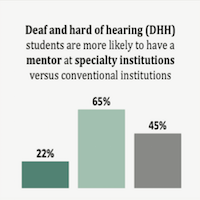That Was Then, This Is Now: 25 Years Ago in CRN
A look through the back issues of CRN provides some interesting contrasts in what’s changed and what hasn’t. This is the second of a series of occasional articles looking back at the hot topics in CRN 25 years ago.
In Winter and Spring 1990, as reported in CRN:
The subcommittee on Investigations and Oversight of the House of Representatives Committee on Science, Space, and Technology held hearings to address problems of software system safety, reliability, and quality. The precipitating incident was several deaths that had occurred due to software errors in the control of a radiation therapy device. Notably missing from the list of concerns, by our current view, is security. But the Internet age was just dawning. Another article in the same issue of CRN referred to “the current NSF-sponsored networks (commonly called the Internet).”
The Taulbee Survey reported that in 1988-89, 807 PhDs were awarded in Computer Science and Computer Engineering. Thirteen percent went to women and one percent went to underrepresented minorities. Four percent of tenured and tenure-track faculty were female, and two percent were underrepresented minorities. In 2013-2014, 1,940 PhDs were awarded in Computer Science, Computer Engineering, and Information. Eighteen percent went to women and three percent to underrepresented minorities. Seventeen percent of tenured and tenure-track faculty are female and four percent are underrepresented minorities.
The Canadian government announced a large research funding program, Networks of Centres of Excellence, which included three groups working in computing research: the Institute for Robotic and Intelligent Systems (IRIS), the Institute for Telecommunication Research, and the Ultra Large Scale Integration network. Both then and now, CRA’s charter is all of North America.
The January 1990 CRN included 25 job ads, all for North American academic positions. The January 2015 CRN included 164 job ads. Twelve of the ads were for non-North American positions (primarily academic, some with overseas campuses of US institutions); three were for industry or government research labs.
An analysis by the Computing Research Board (CRA’s predecessor organization) reported that 60% of federal R&D expenditures in computer science and engineering came from the defense sector; the three largest sources of funds were, in decreasing order of funding, DARPA, NSF, and ONR. Most of the DOD funding supported applied research and development, but a significant fraction supported basic research. The landscape for research funding has shifted considerably. In the most recent proposed FY16 budget, defense (DARPA, the service labs, and DOE nuclear stockpile stewardship) supports about 29% of all federal IT R&D (definitions of “IT R&D” can differ across agencies). NSF is expected to support about 89% of all fundamental CS research at universities.*
The article “Is Computing Research Isolated from Science?” emphasized the need for computer scientists to engage in interdisciplinary research. Research funding was likely to support work directed at solving societal problems, and computing research was expected to be the enabling technology for advances in many of these areas, but computing researchers needed to be directly involved in working with other areas. However, many researchers were more interested in, and more rewarded by their communities for achievements in, the core of computing. Interdisciplinary research continues to be vital to solving societal problems. Computing researchers participate in interdisciplinary projects in health, education, transportation, and business. CRA’s Computing Community Consortium helps organize workshops that bring together researchers from various disciplines to discuss how advances in computing could address societal issues such as Aging in Place, Brain research, and human computation.
*Thanks to CRA’s Director of Government Affairs Peter Harsha for providing the current figures for government funding.









